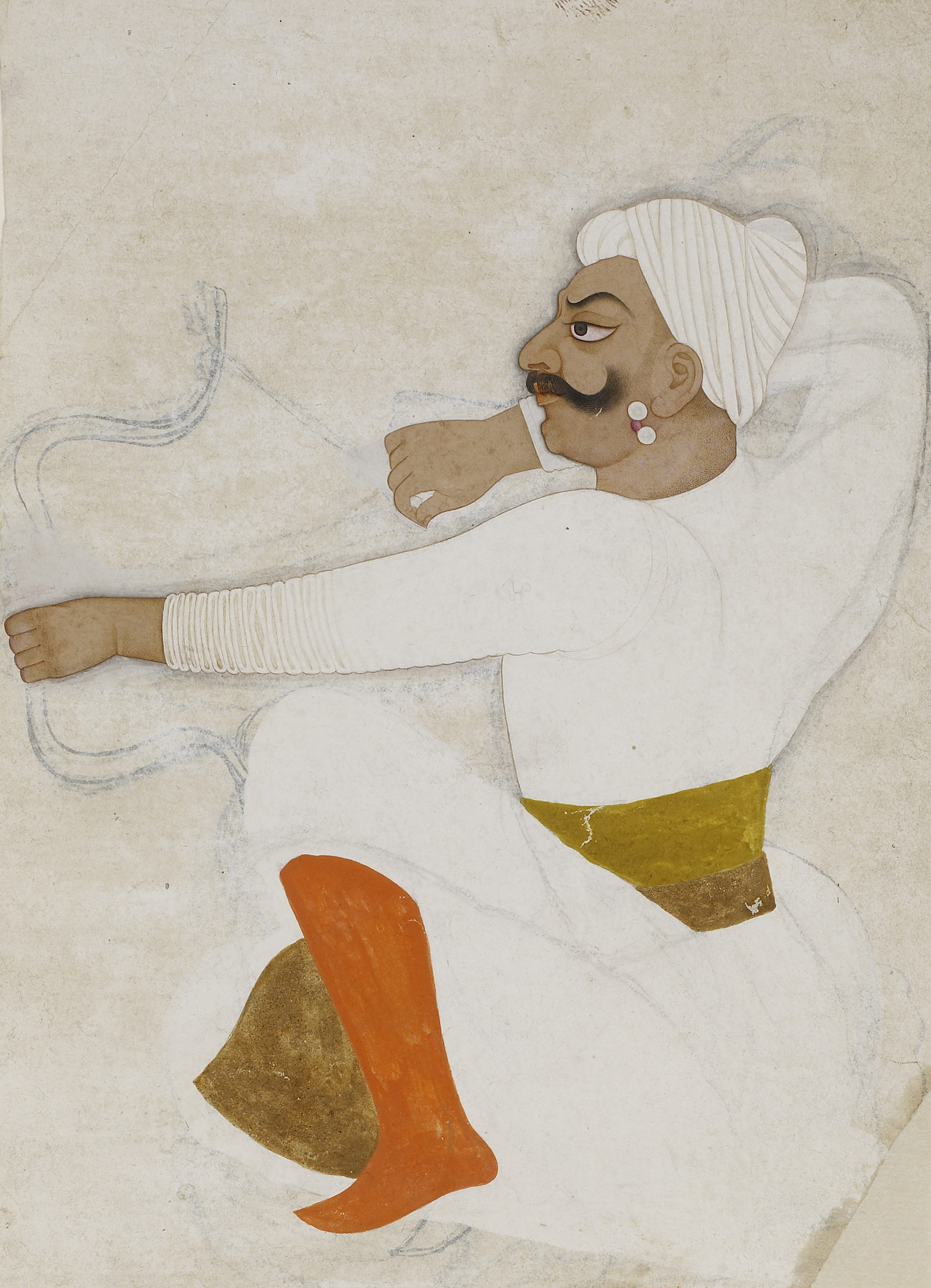Study of an Archer
(India, Nepal, and Tibet)
This unfinished work provides a glimpse into the process of making a painting. Artists began by covering the paper with a thin layer of white paint, which created an even surface suitable for detailed work. They then made a preliminary drawing using ink and a fine brush; this is clearly visible where the quiver was meant to be executed. Pigments were obtained from minerals, metals, plant materials, or even insects; artists made them into paints by mixing them with water and gum arabic—a binding medium derived from the sap of the acacia tree. At various stages, the painting was turned face down on a smooth surface and rubbed with a hard tool to achieve a glossy finish.
Provenance
Provenance (from the French provenir, 'to come from/forth') is the chronology of the ownership, custody, or location of a historical object. Learn more about provenance at the Walters.
John and Berthe Ford, Baltimore; given to Walters Art Museum, 2001.
Exhibitions
| 2001-2003 | Desire and Devotion: Art from India, Nepal, and Tibet in the John and Berthe Ford Collection. The Walters Art Museum, Baltimore; Santa Barbara Museum of Art, Santa Barbara; Albuquerque Museum, Albuquerque; Birmingham Museum of Art, Birmingham; Hong Kong Museum of Art, Hong Kong. |
Conservation
| Date | Description | Narrative |
|---|---|---|
| 8/8/2017 | Examination | examined for exhibition |
Geographies
India, Rajasthan, Kishangarh (Place of Origin)
Measurements
H: 7 15/16 x W: 5 13/16 in. (20.2 x 14.8 cm); Framed H: 20 1/8 × W: 15 3/16 × D: 1 1/4 in. (51.12 × 38.58 × 3.18 cm)
Credit Line
Gift of John and Berthe Ford, 2001
Location in Museum
Not on view
Accession Number
In libraries, galleries, museums, and archives, an accession number is a unique identifier assigned to each object in the collection.
In libraries, galleries, museums, and archives, an accession number is a unique identifier assigned to each object in the collection.
W.885




